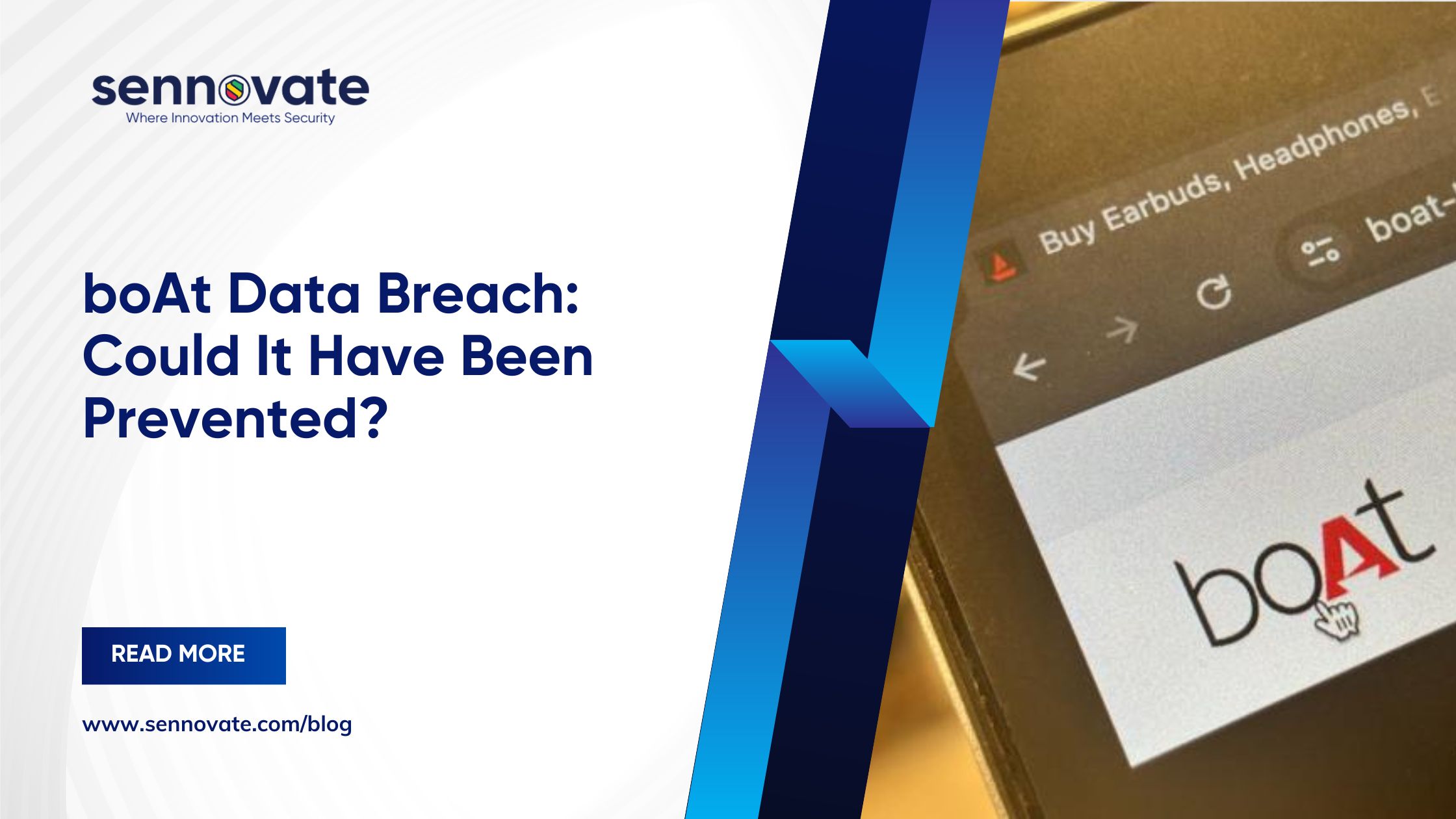
boAt Data Breach: Could It Have Been Prevented?
We’ve all got our favorite BoAt headphones (or maybe that cool speaker you snagged last summer). But some recent news might have you sweating – a hacker snagged info on over 7.5 million customers, and it’s floating around the dark web (the creepy internet underbelly). Let’s delve deeper into the potential causes of the breach and the broader implications for IoT security.
But wait, what exactly happened?
Apparently, a hacker named “ShopifyGUY” is behind the whole thing. The hacker grabbed personal info like names and addresses. This could lead to those phishing scams (fake emails or calls trying to steal your passwords) or even identity theft.


Protecting Your IoT Devices
This data breach is a wake-up call, especially when it comes to the Internet of Things (IoT) – all those smart devices that connect to the internet, from speakers to smart watches. While super convenient, these devices can also be vulnerable to cyber attacks if not secured properly. Here are 4 tips you should do immediately to make sure you are secure from potential attacks on your IoT devices:
- List Your Gadgets: Make a list of all your internet-connected devices. Ditch any unused ones.
- Update, Update, Update: Install software updates on your devices when they pop up. They fix security holes since previous versions have known vulnerabilities.
- Separate Network (optional): Consider a separate Wi-Fi network for your smart devices for extra protection.
- Double Security: Use two-factor authentication on your devices if available (like a double lock for your data).
Could The boAt data Breach Have Been Prevented?
Organizations are more vulnerable to cyberattacks, especially because of the sensitive Personal Identifiable Information (PII) that they handle. As connected systems increase in number and sensitive data becomes digital, bad actors are focusing more on organizations in an attempt to take advantage of weaknesses and obtain access to this important data without authorization. Given the sheer volume and significance of personally identifiable information (PII) that organizations hold—whether it be in the form of customer databases, employee records, or financial data—they are easy targets for cybercriminals looking to commit identity theft, financial fraud, or other malicious acts. Protecting PII has become a top priority for many businesses in all industries, and should . To counteract the constantly changing threat landscape, this calls for strong cybersecurity solutions and proactive risk mitigation tactics.
Let’s get into long-term detection and prevention strategies that can take your organizations security to the next level. When considering long-term security measures, the pivotal role of a Security Operations Center (SOC) emerges. Analogous to a watch dog, the SOC diligently oversees applications, endpoint, your network and more to detect and address any potentially malicious activity. Here’s how Sennovate’s SOCaaS (Security Operations Center as a Service) offering can critical for security your IoT devices:
- Spotting Sneaky Devices: We use advanced asset analytics to find even hidden IoT devices on your network, defining them by their IP address and monitoring activity, so we can secure them all.
- Tracking Network Traffic: Our SOCaaS constantly watches your network traffic for unusual activity, like a device accessing something it shouldn’t or sharing sensitive information. This can help identify potential threats before they cause any damage.
- Rapid Response: If our system detects a suspicious activity, Sennovate’s experts will take immediate action to contain the threat and minimize damage.
These are just a few of the long list of capabilities that Sennovate’s Security Operations Center as-a-Service offers. Want to learn more? Get in touch with Sennovate today and let’s start protecting your organization together.
Cybersecurity is a business risk that Sennovate solves and manages for you. We offer flexible SOCaaS plans to fit your needs and budget. Let’s make your organization a haven, not a hacking ground.
